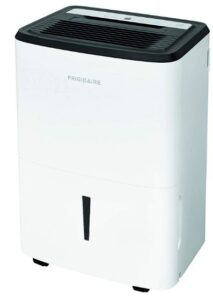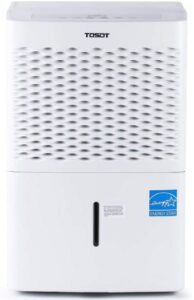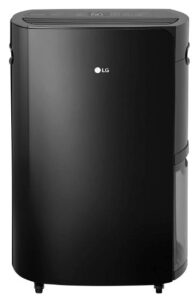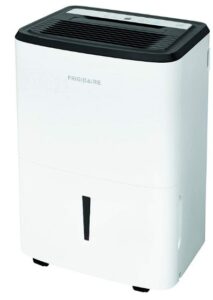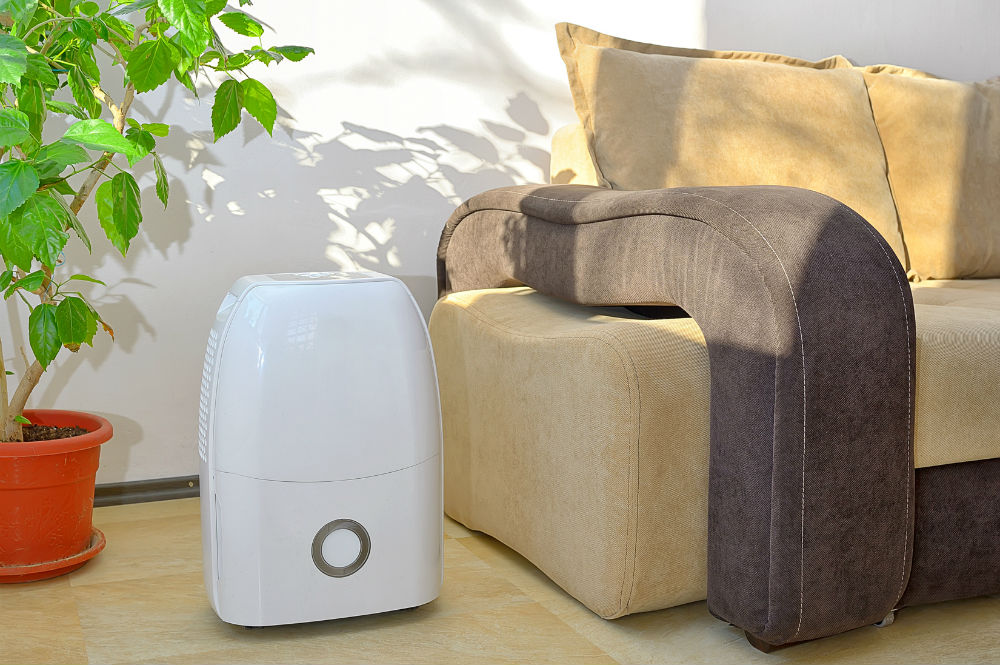In humid climates, dealing with stickiness can be extremely bothersome. It can get into the nooks and crannies of our home and make them damp. Depending on the material, generally, a house with 30-50% of humidity won’t be an issue. However, humidity levels above 50% can cause serious issues such as mold, mildew, and dust mites inside spaces.
To deal with this issue, you need a dehumidifier that will help you remove the excess water from the air. It does so by drawing the humid air in through an inlet via an internal compressor and fan. The air passes through the cool coils, which takes out the excess moisture and condenses it into the reservoir. It then propels the dry air back into the room.
There are multiple humidifiers with concentrate pumps that vary from portable, low-capacity units to high-tech ones, which can dehumidify rooms of about 6,000 square feet.
Our Top 3 Picks
- Offers benefit of portability across spaces
- Various humidity control options for the user to choose from
- Built-in pump allows for effective moisture removal
- Includes a washable filter for easier maintenance and durability
- Well-suited for small spaces of up to 500 square feet
- Offers a noise-free operation
- Energy-Star rated, so you don’t have to worry about the bills
- Has caster wheels for easy portability
- Smartphone control for the user’s ease
- Designed with a built-in drain pump for more safety
- Shuts off automatically if it exceeds its operational limits
What's in This Buying Guide
Table of Contents
Since dehumidifiers are available in various shapes and sizes, it can be hard to pin down what would be suited to your specific needs.
Dehumidifiers with pumps are of two types; permanent and portable. Permanent ones have to be mounted while you can move the portable ones from one room to another and store them easily.
A mounted unit does not have the flexibility to suck water from its surroundings, and you need to rely on a drain in the area for the water to be pulled by gravitational force.
On the other hand, a portable one might have to be kept on an elevated surface in a similar situation, which is where the need of having a pump pops in. Having a pump makes draining the water out super convenient for distances of about fifteen feet at maximum.
In this review, you will find reviews of our top picks of dehumidifiers with a pump and how you can purchase the best one for yourself.
Best Dehumidifiers with a Pump
- 1. Best for regular use: Frigidaire FFAP5033W1
- 2. Best for performance speed: Tosot 20 Pint Dehumidifier Energy Star
- 3. Best for smart-use: LG PuriCare 2019 Energy Star 50-Pint
- 4. Best for value for money: Inofia Dehumidifier
- 5. Best for basements: Black+Decker BDT50WT
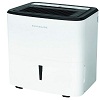
Frigidaire FFAP5033W1
Best for regular use
Pints per Day:
5024-Hour On/Off Timer:
YesContinuous Drain Operation:
YesAuto Shut-Off:
YesArea Covered:
1500 sq ftControl Type:
Electronic
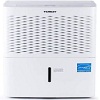
TOSOT Dehumidifier Energy Star
Best for performance speed
Pints per Day:
2024-Hour On/Off Timer:
NoContinuous Drain Operation:
YesAuto Shut-Off:
NoArea Covered:
1500 sq ftControl Type:
Manual
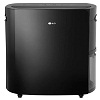
LG PuriCare 2019 Energy Star 50-Pint
Best for smart-use
Pints per Day:
5024-Hour On/Off Timer:
NoContinuous Drain Operation:
YesAuto Shut-Off:
NoArea Covered:
2000 sq ftControl Type:
Manual
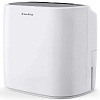
Inofia Dehumidifier
Best for value for money
Pints per Day:
3024-Hour On/Off Timer:
YesContinuous Drain Operation:
YesAuto Shut-Off:
NoArea Covered:
1056 sq ftControl Type:
Manual
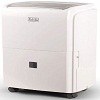
Black+Decker BDT50WT
Best for basements
Pints per Day:
5024-Hour On/Off Timer:
YesContinuous Drain Operation:
YesAuto Shut-Off:
YesArea Covered:
1000 sq ftControl Type:
Manual
The Frigidaire FFAP5033W1 is the one to go for if you need to regularly get rid of about 50 pints of water. It helps dry the air most efficiently and speedily, and the set-up is also pretty easy thanks to rolling casters and side handles.
Features
- It offers the benefit of portability across spaces
- There are various humidity control options for the user to choose from
- The built-in pump allows for effective moisture removal
- It includes a washable filter for easier maintenance and durability
Summary
This Frigidaire dehumidifier is the most suitable for residential use and is specifically made for basements and garages.
It can pump water from a distance of about 16 feet and gets rid of a significant amount of dust from the air.
It also has humidity control settings and includes three fan speeds, which gives users various levels of comfort, according to their personal preference.
It also features an automatic shut-off and full tank alert option, which alerts the user when they need to empty the 2-gallon capacity bucket.
Users can also choose the continuous drain mode, connect it to a normal hose and watch as it handles the rest on its own.
Overall, it’s a great choice for those looking to maintain their indoor air quality without having to spend a lot of time and effort into its usage and operations.
PROS
- The overall aesthetic is very sleek and clean, with a simple user interface
- The system features three fan speeds and function very smoothly even on the high setting
- It has good energy efficiency thanks to the high moisture removal rate
- It operates silently because of the low compressor noise and the upward-facing CFM exhaust
- The body is built with high-quality materials, ensuring durability and reliability
CONS
- The water collection bucket is average-sized, so it tends to fill up quickly.
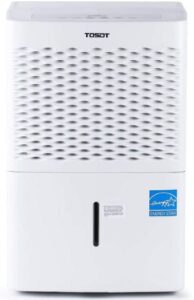
Features
- It is well-suited for small spaces of up to 1500 square feet
- It offers a noise-free operation
- It is Energy-Star rated, so you don’t have to worry about the bills
- It has caster wheels for easy portability
Summary
Tosot offers multiple advantages with this unit, the foremost being the drain hose included with the purchase, so you don’t have to worry about purchasing it additionally.
In case of a power outage, it offers an automatic restart, and the air filters are removable for easy washing.
This means that you can reap the benefits of clean, dehumidified air for years to come. It also features a 2-gallon drain bucket.
It operates on different decibels (52/50/48), which means you can choose from a high/medium/low setting depending on how quickly you want to dehumidify your space.
Being Energy-Star rated, it will also save you from giving away too much in the utility bill. It is also UL-approved, which means you get the highest safety standards for your use.
PROS
- It features a modernistic design that suits any space````
- It has an internal pump that makes drainage easier
- It is certified by Energy Star for safety and operational efficiency
- It has a super quiet operation which offers an interruption-free ambiance while it works
- The power outage restart option saves the settings of the user and continues where it left off in case the electricity goes off
CONS
- Some users have reported problems with its internal pump, but the unit can work perfectly fine with the gravity drainage method too.
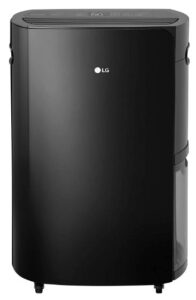
Features
- It provides smartphone control for the user’s ease
- It is designed with a built-in drain pump for more safety
- It shuts off automatically if it exceeds its operational limits
Summary
LG Puricare has a combination of the most useful features that you can expect from a dehumidifier. Users get an alert when the bucket is full, after which the auto-shut-off prevents the water from overflowing.
It also features super interactive and user-friendly display options and has four wheels for easy movement. It can get rid of 50 pints of moisture from an area of about 2000 square feet.
Another unique thing about this LG dehumidifier is that it can connect to Wi-Fi and give the user complete control over it from a distance.
Users can then keep a check on things like bucket capacity and get any alerts. Plus, its body is made using thermally resistant materials, which prevents any risks of overheating.
PROS
- A well-built system with a metal frame and exterior
- Excellent airflow rate
- Great voice control
- Good value for the money
CONS
- The brand offers a short warranty period of only one year for this unit.
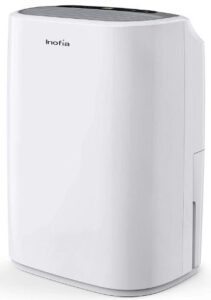
Features
- It has user-friendly drainage options
- It comes with auto-defrost and auto-restart in case of a power outage
- It features a built-in humidistat
- It has a super quiet operation, with a maximum noise level of 46dB
Summary
The Inofia dehumidifier is the one to go for if you are on a budget but don’t want to compromise on quality and efficiency.
The drainage system in it is effortlessly easy; even though it has a manual drainage system, it has conveniences for the user in terms of an indicator when the bucket gets full as well as an audible alarm.
Alternately, you can connect a hose to it for drainage purposes.
It also features an auto error-detection that alerts the user to go for a troubleshoot if the dehumidifier stops working.
The washable filter present helps protect the inner parts from risks such as dust damage that comes from the surrounding air.
It also features a continuous mode when the target humidity setting is 30 pints.
PROS
- Uses 15% less energy than competitors
- Designed to have a user-friendly interface
- A super quiet operation that allows for an unhindered ambiance
- Features a smart control panel for the user’s ease
- The handle is smooth, and you can hide it for a better aesthetic
CONS
- Users may find it a little tough to open the water tank because of the overall design.
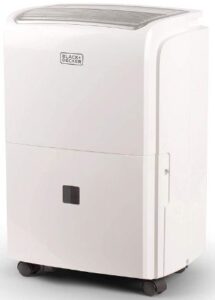
Features
- It has a user-friendly electronic display panel
- It comes with an adjustable humidistat with an 8.5-pint bucket capacity
- It also features a clean-filter reminder indicator
Summary
The Black+Decker BDT50WT is a great fit for spaces prone to dampness, such as the basement or cellars. It is crafted elegantly with easy-to-use handles and four mobile caster wheels for easy portability.
It has an electronic panel mounted atop and features an LED display so you can adjust it to your preferred setting.
You can choose from three fan speeds and set the humidistat, too.
It has an 8.5-pint bucket capacity that is more than enough to completely eliminate any mold or moisture in your space.
There is also an option for continuous drainage. This unit also has a unique technological aspect: it features digital functions such as auto-shutoff, auto restart, and auto defrost.
It also alerts the user when it is time to clean the filter.
PROS
- A highly efficient unit, owing to its low-tested power draw and high-tested moisture removal rate
- Features a high CFM fan and upward-facing exhaust which compresses noise
- It comes with a gravity drain hose, so you don't have to spend additional money trying to get your hands on one
CONS
- Some users have reported it to display inaccurate hygrometer readings
- It has a heavy body, and the overall design does not allow for cord storage
How does a Dehumidifier Work?
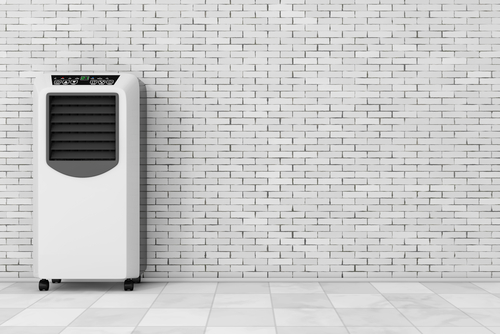
In order to understand how a dehumidifier works, it is important to know its components, which consist of a fan compressor (helps in cooling the coils of the dehumidifier), re-heater (grasps and contains the heat that the cooling process creates), compressor cooling coils, and a reservoir.
All these components come together to suck moisture from the air.
A fan takes the surrounding air and directs it towards the dehumidifier, where the air passes through the cooled coils that use condensation to extract any moisture in the air.
The collected moisture stays on the coils and goes to the reservoir. Then, the dehumidifier reheats the air and directs it back outside.
Some dehumidifiers come with a removable plastic bucket that acts as a reservoir, while others allocate space for hooking up a hose so that the water can drain directly into the drain or pump.
A reservoir overflowing alert or auto shut-off options are also present in some dehumidifiers. Another added feature could be a built-in condensate pump, which pumps water out of the unit’s reservoir as per the need.
If you have a humidistat in your humidifier, it will let you set a desired level of humidity through its sensing element and the relay amplifier.
The sensing element makes use of metal conductors, and any detected change will result in electrical resistance, meaning that it will send signals to turn the dehumidifier on or off.
Why Buy a Dehumidifier with a Pump?
Going for a dehumidifier with a pump is always a better option as it provides various benefits. The primary benefit is its ability to spontaneously drain water deposited up in the water tank, eradicating the need for the user to manually empty out the tank. Apart from saving you labor work, other benefits include:
Insect and Mold prevention
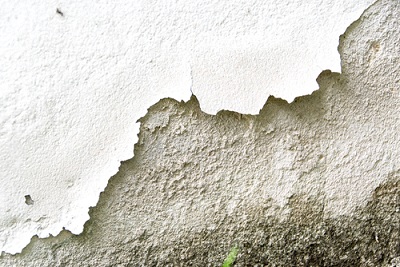
Humid and damp spaces are ideal for the growth of mold. This leads to your personal spaces being invaded by insects that survive in damp areas like mosquitos.
Similarly, you might come across silverfish in areas such as the laundry room or the basement. Once they grow in number, your space can start smelling weird, and the mold can also contribute to substantial damage to the structure.
Mold is also associated with negative health impacts, such as skin allergies, cough, and breathing problems. A dehumidifier prevents this mold from surfacing in the first place.
Encourages Healthy Living
High amounts of humidity can trigger most skin conditions, such as eczema, and cause health conditions like asthma and eye irritations. Getting a dehumidifier can help you turn your air cleaner and fresher, thus improving your health.
How to Choose an Air Filter Delivery Service
Choosing an air filter delivery service calls for consideration of various factors, each as important as the other if you want to ensure the dehumidifier’s maximum efficiency. The most important things you should keep in mind are:
Dehumidifier Capacity and Area of Coverage

As mentioned before, compressor-based dehumidifiers can eliminate several gallons of water from the air per day.
But what exactly is a dehumidifier’s capacity?
A dehumidifier that can easily remove 6.25 gallons of water from the air per day is said to have a capacity of 6.25 gallons.
Most dehumidifier manufacturers don’t use the metric of gallons to specify the capacity; instead, they use pints to make the capacity understandable and give users an idea of the volume.
A pint is simply an eighth of a total gallon. So, in other words, a dehumidifier having a capacity of 6.35 gallons is simply a 50-pint dehumidifier.
The most common types of dehumidifiers are 50-pint compressor-based dehumidifiers, followed by 35-pint and 22-pint dehumidifiers. However, there are many other general capacity standards on the market that range from 20 to 45 pints of moisture removal per day.
Hose connection
A dehumidifier with a hose connection can prevent the user from having to empty the machine manually. In case you are unable to find one like this, you can look for a unit with an in-built pump that would direct the water to a window or a sink.
Filter indicator
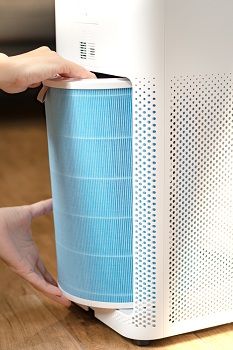
A filter indicator helps the user in keeping proper maintenance of the filter by reminding them of when they have to clean the air filter.
Auto-humidistat
An auto-humidistat helps in getting rid of the moisture in the air so that the dehumidifier shuts off automatically as soon as the desired level is reached, so this is another really important factor to consider.
Usage flexibility
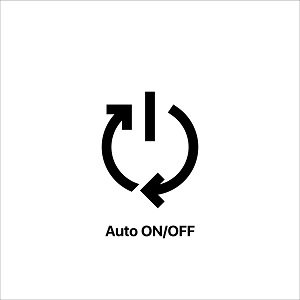
Dehumidifiers with settings like auto-defrost and automatic restart function are saviors if you cannot constantly keep a check on your appliances. Such dehumidifiers remember the settings they are programmed with, and if there is a power cut, they automatically switch back on when the power is back.
Size
Small to medium units are good for spaces such as the study, living room, or office space, but they are nearly not as powerful as larger units that come with an in-built pump. For spaces such as a garage, a larger capacity unit with a pump would be a better choice, and you will not have to worry about taking the water out of the reservoir manually.
Legal requirements

There are set standards for dehumidifiers sold in America in compliance with the government standards and the US Department of Energy (DOE) that craft the framework of specific requirements for manufacturers to follow. The two basic requirements any dehumidifier should fulfill are;
The Pints/Day Specifications
Previously, dehumidifiers were tested at 80°F and 60% RH. After June 13, 2019, they were tested at a lower temperature of 65°F but at the same humidity level, of 60% RH.
This decrease is because colder air has less moisture than warmer air at the same humidity level.
The Energy Efficiency Requirement
It is also important to consider how the DOE’s energy efficiency requirements for dehumidifiers have changed.
In the past, the requirements for pints/ day capacity were:
≤ 35.00 35.01-45.00 45.01-54.00 54.01-75.00 ≥ 75.01 | 1.35 1.50 1.60 1.70 2.5 |
After June 13, 2019, they changed to:
≤ 25.00 25.01-50.00 ≥ 50.01 | 1.30 1.60 2.80 |
The energy-efficiency requirements are now considered to be “integrated energy factor” rather than “energy factor,” which measures the liters that the dehumidifier removes per kWh of energy used while active.
Models currently present in the market display an Energy Star sticker and are also marketed as Energy Star compliant.
Some of these might not meet the new requirements because the time that they were manufactured might be older when the previous requirements were the law.
However, the ones reviewed above are all Energy Star compliant according to the new requirements, so you have nothing to worry about.
Types of Dehumidifiers with a Pump
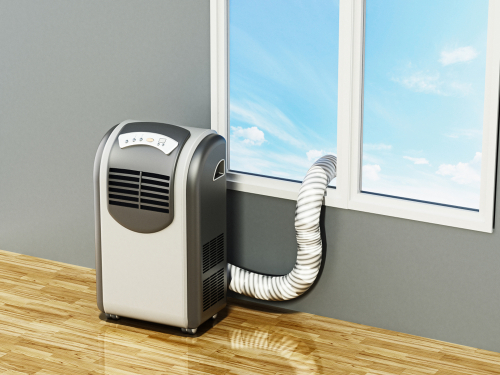
Dehumidifiers with a pump are of two types, stationary and portable.
Stationary
These dehumidifiers do not come with handles or wheels and are relatively heavy in weight since they are not meant to be moved around. As the name suggests, these types of dehumidifiers are supposed to be restricted to a specific space and provide you with maximum efficiency.
Portable
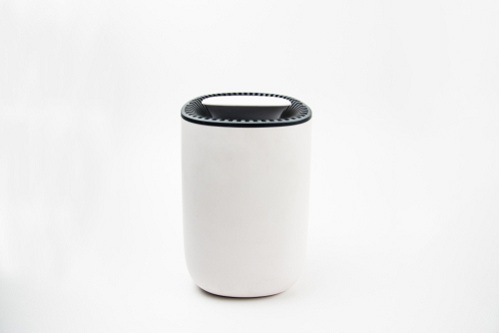
These units come with handles and wheels and are lightweight, making it easy for you to move them around. You can use them in multiple spaces in the house and even drain them anywhere in the house, including the kitchen sink.
FAQs:

Should you get a dehumidifier?
If the air in your house tends to be in a stuffy state with unbearable moisture in the air, then buying a dehumidifier is definitely worth it. Also, if your house has a basement, garage, or a cellar with a moist and damp smell always in the air, then a dehumidifier is a must.
These spaces usually have humidity due to excessive groundwater penetration and lack of air spaces.
Not only basements but also spaces that are above the ground suffer from high levels of humidity. Laundry rooms are a good example of a space that would need a dehumidifier as their walls and floor often come in contact with water.
Any other enclosed space can also pose a problem as it might not be constructed in a properly sealed manner, causing loops in the ventilation systems.
Other spaces that might really need a dehumidifier are attics, garages, and walk-in closets, as these places don’t have systems of conditioning or heating to regulate the temperature and keep it in check.
In such spaces, the humidity level present is usually above 60%, which can lead to the growth of mildew, mold, and infestation of insects, resulting in various allergies and diseases. These places also lack heating and air conditioning and continuous airflow. If these kinds of conditions are present in your household or workspaces, then investing in a dehumidifier is a smart idea.
Can mold be prevented by using a dehumidifier?
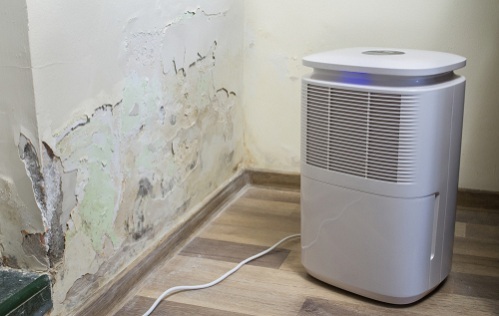
Mold is usually present in damp and poorly-lit places and can be very dangerous for health. Dehumidifiers help prevent the growth of and eliminate mold and mildew in your house since they help extract moisture from the air.
However, dehumidifiers cannot remove the mold already present.
Also, keep in mind that the ideal humidity level in your house must be a maximum of 55%. Any increase in humidity level can help and nourish the growth of mold and other bacterias.
Moreover, many advanced dehumidifiers come with a humidity gauge present called a hygrometer, which helps users keep track of the amount of moisture present in their confined space, thereby eliminating the chances of mold growth.
How to determine the size of the dehumidifier?
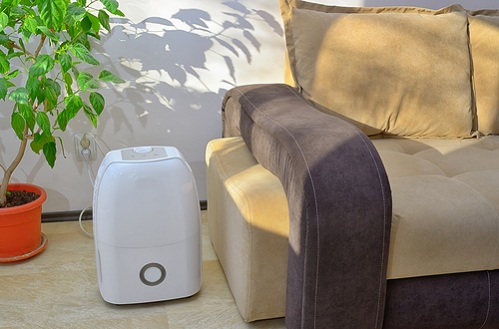
Determining the size of a dehumidifier can be really tricky and depends entirely on the size of your room. The size of the room and the moisture levels help you ensure the perfect size.
After browsing and searching for some specific features you want in your dehumidifier, you can simply cross-check the damp conditions and the size of the space to ensure that the dehumidifier can actually help cut down moisture.
In simple words, the bigger and wetter the space is, the more powerful the unit you will need. For example, a 60-pint dehumidifier will help cover a damp space of 600 square feet. Similarly, the cooler the space is, the less moisture there is to remove since cool air contains less moisture. The basic guidelines to keep in mind are:
- A small dehumidifier will remove up to 25 pints of moisture at 65°F and 40 pints of moisture at 80°F at an area of 300-600+ square feet.
- A 30-pint dehumidifier or even a 35-pint one is considered to be a medium-size unit and can successfully remove moisture at 65°F. Meanwhile, a 60-pint one can clear up moisture at 80°F from an area of 700-1000+ square feet.
- A large dehumidifier can remove up to 45 pints of moisture at 65°F and 90 pints of moisture at 80°F at an area of 1300-1500+ square feet.
Often, users can get a hold of a buyer’s guide, which includes a size chart or table that helps you pin down the exact capacity you need according to the size of your space. This chart can help you with selecting the dampness of the space along with the square footage.
Will dehumidifiers with pumps use up more energy?
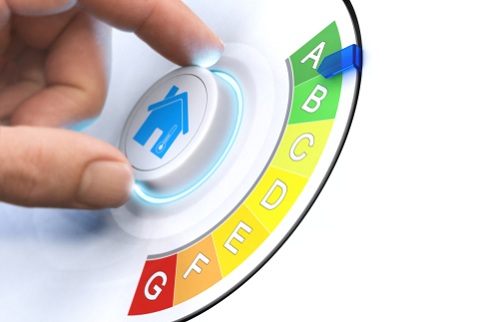
Yes, dehumidifiers with pumps use up more energy. Normal dehumidifiers usually depend on gravity for water drainage. Since the force of gravity is a natural force, it requires no extra power in order to help drain.
For this reason, a normal dehumidifier does not require any extra energy.
However, dehumidifiers with a pump are different. Water that needs to be drained is usually pumped out via a hose.
This requires energy because water is drained against gravity through an elevated space or a window; hence, dehumidifiers with pumps require energy for the dehumidification and drainage process.
Final Verdict: What is the best Dehumidifier with a pump?
Out of all the products mentioned above, our top pick is definitely the LG Puricare. What we love the most about it is that you can control it via a smartphone.
Nobody likes to control a dehumidifier by going to it and using the buttons present on it in today’s advanced world. With this dehumidifier, you can achieve the humidity level you need without moving from your seat.
It also shuts down automatically, and if you constantly worry about appliances consuming extra energy when you’re away from home, then this feature is one that you will definitely enjoy.
I’m a degreed ME (mechanical engineer) who is passionate about machines of all kinds. I created MachineWonders.com as a way to connect with others who love machines like me – or need help choosing one for their needs, application, or situation.

